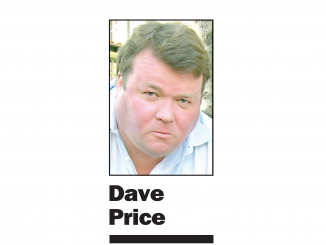
BY ALLISON LEVITSKY
Daily Post Staff Writer
After a missed union contract deadline led the Palo Alto school district to pay out $6 million in raises and bonuses to employees last year, the Palo Alto teachers’ union has agreed to give back the 2% bonuses to the district.
The bonus, along with a 3% raise for the teachers’ union and the California School Employees Association, was accidentally triggered when the district’s lead negotiator, Scott Bowers, missed the March 15 deadline to reopen union negotiations.
Bowers retired as the district’s superintendent for human resources in June.
The district had overestimated how much property tax revenue it was going to take in, resulting in a financial crisis. The school board decided to cut back by reopening the contracts with its unions and eliminating the pay hike and bonus. But Bowers missed the deadline to reopen negotiations, so the raises and bonuses automatically went into effect.
The nearly $2.2 million that would have been paid out to teachers at the end of the current school year will instead go back to the New Schools Fund and the Common Core Discretionary Fund in a move that “affirms the collaborative relationship” between the district and the union, Hendricks said.
Unions were warned
In September, Trustee Terry Godfrey said the raises and bonuses would hurt the unions going forward.
“This still causes a spending issue for subsequent years including, most likely, having to make more budget cuts and not being able to offer raises in the near future, which can hamper our ability to attract new teachers,” Godfrey said in September.
The $6.1 million New Schools Fund was created in June 2015 after several years of rising enrollment led district leaders to believe they might need to open a new elementary and/or a new middle school.
The board agreed in September to draw from the fund for a $1.5 million bonus for employees.
The Common Core Discretionary Fund is used to pay for the implementation of state-standardized resources, like textbooks.
Class size policy
In other school board news last night, the district is continuing to refine a policy to crack down on creeping class sizes.
Under the policy, the district’s chief academic officers would present enrollment levels to the board within the first 45 days of each school year and again in March or April, before hiring begins. Any classes with more than 32 students would be flagged for review by the board.
The district’s contract with the teachers’ union sets average numbers of students for each grade level.
Kindergarten teachers should be assigned to about 19 students, first-grade teachers can have about 22 students, while sixth- through 12th-grade teachers can have 28 or 29 students, with smaller classes for core, math and English.
The board may introduce a waiver process whereby teachers could admit students above the limit.
Popular classes
But trustee Melissa Baten Caswell urged the board not to make the waiver process so onerous that it kept students away from popular classes.
“We’d need to make sure that, if we have a waiver process, it doesn’t keep us from serving the kids that spent all their years up through senior year waiting for AP Psych,” trustee Melissa Baten Caswell said. “We need to have some flexibility in there because we have some classes that are really, really loved — and it might just be one or two kids.”




They’re still getting raises. What was the reason for the bonus in the first place? Some achievement or big goal that was met?